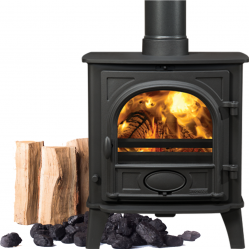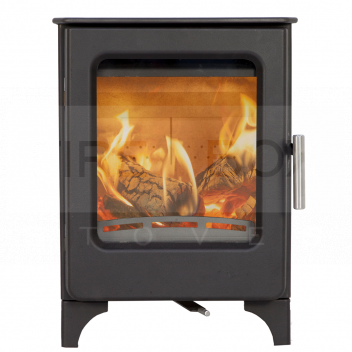Mendip Ashcott Stove, 4.7kW, Black, ECODESIGN Ready

Technical Details
| Product Title | Mendip Ashcott Stove, 4.7kW, Black, ECODESIGN Ready |
|---|---|
| Product Keyword | Mendip Ashcott Stove, 4.7kW, Black, ECODESIGN Ready, Wood Burning |
| Energy Efficiency | A+ |
| SIA Ecodesign Ready | YES |
| Output (Nominal) | 4.7kW |
| Output (Maximum) | 7kW |
| Smoke Control (DEFRA) | Yes |
| Boiler Stove | No |
| Colour | Ivory |
| Flue Outlet Size | 125mm - 5in |
| Fuel | Multifuel |
| Height | 575mm |
| Width | 423mm |
| Depth | 370mm |
| Nominal Output (Range) | 3kW - 5kW |
| Width (Range) | 400mm - 500mm |
| Nett Efficiency (%) | 80.3 |
| Max log length | 300mm |
| Distance to Combustibles (Side) | 400mm |
| Distance to Combustibles (Rear) | 150mm |
| Style | Modern / Contemporary |
| We Like! | The large glass door provides excellent visuals and the air control is easy to use and very responsive. The door is cast iron and deeply contoured with a magnetic pull mechanism. The Ashcott Wide stove is slimmer for the narrower rooms. |
| Centre of Flue to Rear | 128mm |
| Distance to Combustibles (Top) | 375 |
| Direct Air Kit Available | Yes |
| 12mm Hearth Compatible | Yes |
| Heat Shield Available | Yes |
| Height (Range) | 500mm - 600mm |
Product Description
Mendip Ashcott Stove
The Mendip Ashcott Stove is a contemporary and stylish wood burner that is perfect for heating up your home. Designed with modern living in mind, it features a nominal output of 4.7kW and comes in a classic black finish. Built to be environmentally friendly, this stove is ECODESIGN Ready, meeting the latest standards for emission reductions.
- Heat Output: 4.7kW, ideal for medium-sized rooms
- Color: Classic black finish that fits seamlessly into any interior design
- ECODESIGN Ready: Complies with the latest regulations for reduced emissions and higher efficiency
- Construction: Robust cast iron build for durability and long-lasting performance
- Efficiency: High-efficiency design ensures maximum heat generation with minimal waste
- Clean Burn: Equipped with a clean burn system for a more complete combustion process
- Airwash System: Innovative airwash technology to keep the glass clean, offering an unobstructed view of the flames
- Fuel Type: Wood burning, for a sustainable and renewable source of heat
- Easy to Use: User-friendly controls for effortless operation
- Certification: Fully certified and tested to ensure safety and compliance with the relevant standards
File Downloads
Reviews
Multi Fuel Stoves > Contemporary Multifuel Stoves

Contemporary Multifuel Stoves
These stoves combine new technologies with new designs to bring you the very best selection of contemporary multifuel stoves on the market. Beautifully designed, often with clean lines and large glass windows, our range of contemporary multifuel stoves are a perfect addition to any modern or new-build home. Large glass windows on stoves have become increasingly popular, allowing the user to enjoy the full view of the relaxing flames whilst new technology has allowed for better heat retention and efficiency, regardless of how big the glass is.
We supply a very large range of contemporary multifuel stoves, from freestanding cylindrical multifuel stoves, to wall-hanging (even ceiling-hanging!) contemporary multifuel stoves and everything in-between. Our contemporary multifuel stoves are also available in a multitude of sizes and outputs, depending on your requirements, and many even have different stand or log store options to provide ample choice. Whilst this huge range of choice is beneficial for some, we understand it can be confusing for others, so why not come and have a chat with us if you are feeling overwhelmed, and we can go through the most suitable options with you.



